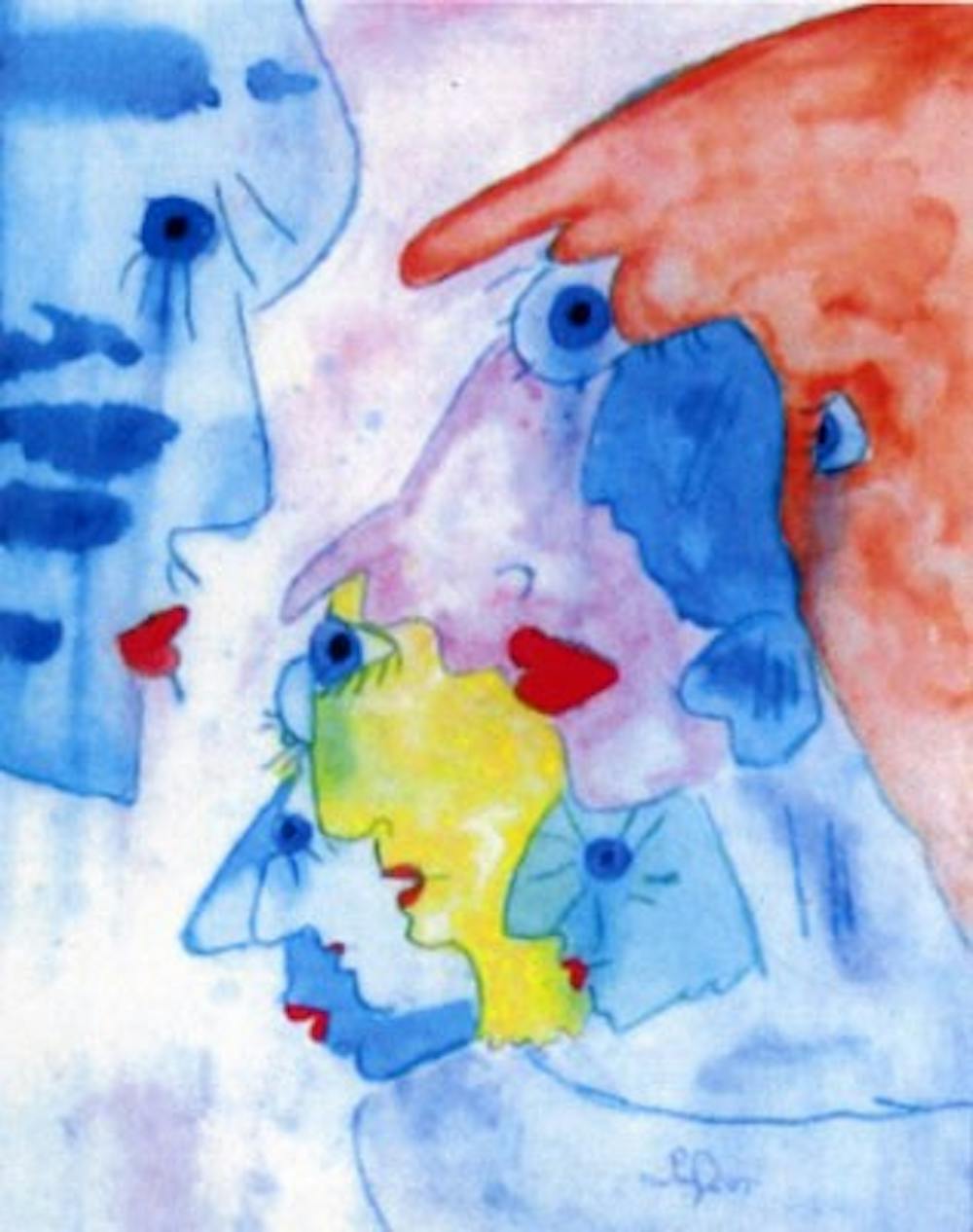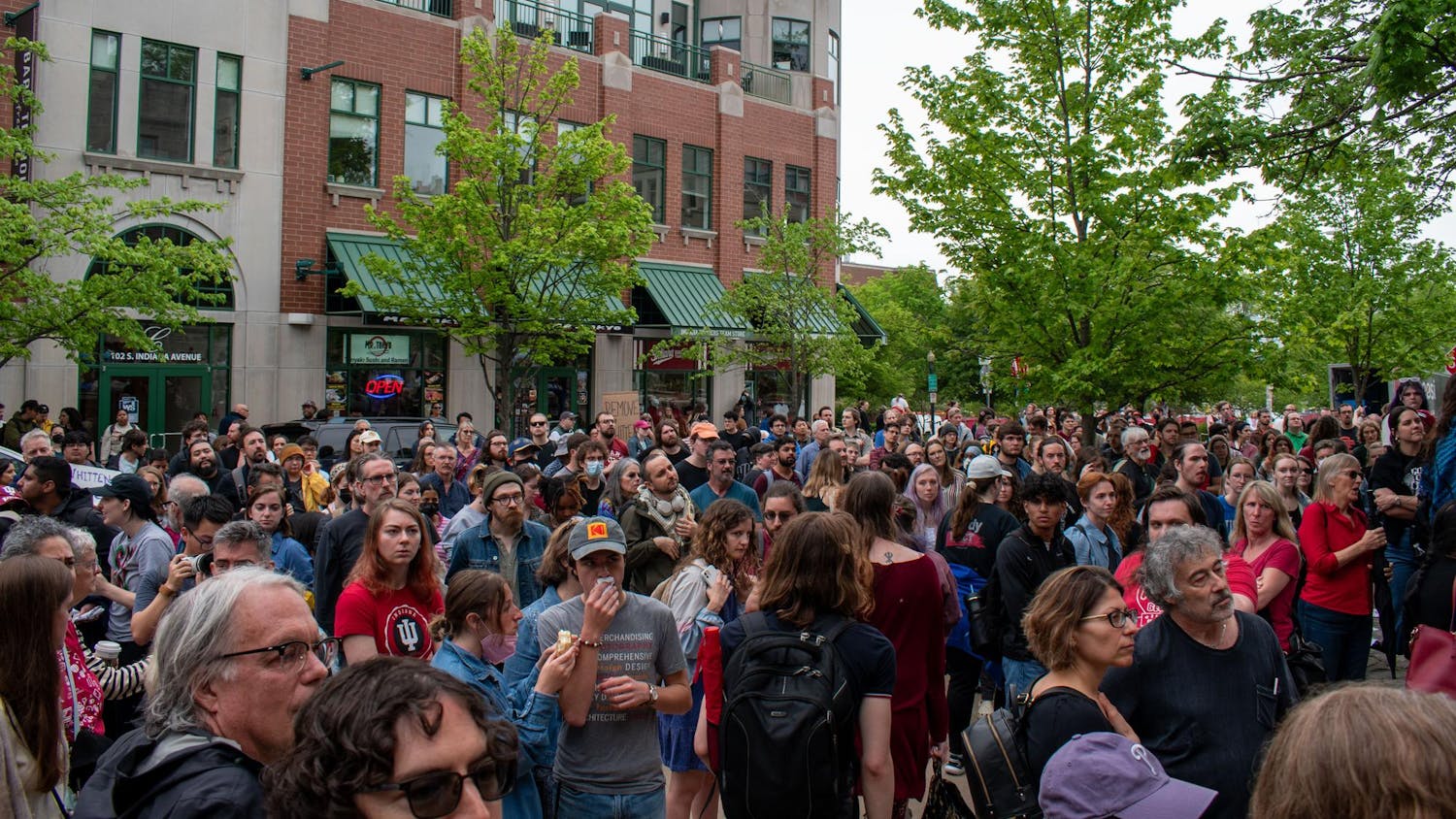Wine had a stigma once upon a time.\nAnyone who drank it was seen as a pretentious, self-absorbed and erudite snob who used words like "erudite" and preferred to be called an enophile instead of what others all knew they really were: a manic lush. \nMeanwhile, anyone who didn't drink wine was seen as an ignorant, lowbrow and uncivilized fool with no appreciation for the finer things in life and who settled for cheap beer and hard liquor because others thought they were too narrow-minded to expand their tastes.\nTruth be told, that stigma still exists. But wine is, more and more, becoming less stigmatized, especially in college communities.\nOver the past 10 to 15 years, the wine scene in America has uncorked. Wineries and vineyards have sprouted up in New England and Napa Valley, in the Pacific Northwest and the Midwest, including Bloomington and south-central Indiana where a current wine festival featuring the crop of seven different wineries continues March 12 and 13. \nWine-tasting and wine-drinking are expanding -- a fact that some wine lovers say is due in part to changing science and attitudes about food and cuisine. And, they say, it's probably due in part to a wine-tasting, road-trip romp that scored big with audiences last year.
"Wine improves with age. The older I get, the better I like it." \n-- Unknown
Wine seems simple enough. It's an alcoholic beverage resulting from the yeasty fermentation of grapes. The word "wine" comes from a Latin word vinum, meaning "vine." There are well-known rules for pairing wine with food. Simple enough, right?\n"Nothing is ever that simple," says one local wine expert.\nWell, OK.\nThe rules for wine are bending and changing, said the local expert, who works at a liquor store in town and politely requested her name remain anonymous because she also works for the University. (We'll call her Sherry.)\n"The old adage is if you have poultry or fish, you drink white wine. If you have red meat, you drink red wine," Sherry said. "We're moving toward not necessarily ignoring that adage, but yes, essentially ignoring that. Now it's about figuring out what you think goes well with food. You never want the wine to overpower what you're eating, and that could be white or red."\nConsidering Bloomington's location, Sherry said, there is a lot of knowledge about wine floating around town. That may be a result of an increase in the agriculture of wine in Indiana since the 1970s. Recently, several local wineries in south-central Indiana formed to create a co-op, The Indiana Uplands Wine Trail.\nNamed after the hillier region of the state untouched by the migration glaciers millions of years ago, seven Indiana wineries -- Oliver Winery and Butler Winery of Bloomington; Carousel Winery of Bedford; Winzerwald Winery of Bristow; Huber's Orchard & Winery of Starlight; Turtle Inn Winery of Corydon and French Lick Winery of French Lick -- have joined together to help establish this area as a prominent wine-producing center in the Midwest. Each has complimentary tasting for the curious.\n"In the last five to 10 years, wine has become a huge phenomenon," said Sarah Villwock, promotions director for Oliver Winery. "If you aren't interested in wine and are not sure where to start, a winery is the perfect place to begin."\nVillwock said many alumni who come back to IU for basketball or football games make it a point to stop by and pick up a bottle or two, so the Uplands Wine Trail will continue to try to connect with students.\nSherry said students might be hesitant to try wine or participate in wine-tasting groups for a number of reasons, including price and knowledge. But, she said, for $10 to $15, anyone can conceivably get a bottle of wine from almost any country that is not only drinkable but quite good.\nAs for knowledge: "It's more important to learn what you like. It's not necessarily about an immense knowledge of wine. In fact, I'm not even sure if knowing everything about wine is the way to go," Sherry said.
"Wine is constant proof that God loves us and wants to see us happy." \n-- Benjamin Franklin
You begin with five S's.\nSee it. Swirl it. Smell it. Sip it. Savor it.\nThat's the way J.R. Philpott, a sommelier at Oliver, suggests you taste wine. \n"There's no right or wrong way to drink wine. Whatever you like is fine," Philpott said. \nBut there are still a few rules you'll want to follow, Philpott admits. Swirling the wine within the glass releases its aromas with increased contact against the glass, he said.\n"You're looking for familiar flavors when you smell the wine," he added, suggesting that a large whiff of the wine will prepare your palette for the incoming taste. Sip a generous portion of the wine, and hold it in your mouth to taste it fully.\nAlways rinse a glass of red wine before pouring in a white wine, as well.\nWines should also be tasted from dry to sweet, because sweeter wines have a stronger flavor and a dry wine's quality would be lost if drank following a strong, sweet wine. \nBut there's a sixth "S", which has come into the forefront of wine lately: science.\nHere's where you can get in some trouble. If you call wine a science, you offend the people who think it's a subtle art. If you call wine an art though, you offend the people who think it's a delicate science.\nCall it an artsy science. Or a scientific art. There's more science involved than people might think.\nChemical tests of ancient pottery jars reveal that wine was among the first biological engineering experiments humankind conducted, producing wine as early as 7000 years ago in present-day Iran, where today an entirely different and more atom-based kind of biological engineering experiments are conducted. \nWine-making is still an evolving science, something Oliver was quick to catch onto. In 2003 they purchased a new wine-making facility that Jon Strahl, an employee at Oliver (who did a pretty decent Giamatii impression when he quoted the movie's line: "If anyone orders Merlot, I'm leaving! I am not drinking any Merlot!") calls "the epitome of efficiency," since it has tripled production.\nThe storage building houses multiple 18,000-gallon fermentation cylinders. An elaborate Rube Goldberg-like assembly line that, through computers and well-timed machinery, automatically does everything from filling the bottle with approximately 750 milliliters of wine to boxing a dozen bottles for shipment. It can produce 6000 to 6500 packaged bottles of wine in an hour.\nIncreasing the production is one of the many reasons the cost of wine has declined, as well, making it more accessible to people on a tighter budget. Many regions of the world now have their own wine facilities, and with production not limited to Europe anymore, availability and affordability is greater.\nA greater understanding of the effects of wine on the human body has also renewed an interest in wine. \n"A lot of it has to do with health reasons. Many of the properties of wine have been linked to good health and longevity," Strahl said.\nCiting a "60 Minutes" report from the early 1990s which examined "the French paradox" -- how the French stay so svelte despite an atrocious diet -- and linked a glass of red wine a day to health benefits, Strahl said people are increasingly interested in healthier food products today and might seek wine as a more frequent addition to dinner. (The health effects, however, are not universally agreed upon and are still under debate and study.)\nUnderstanding the role oxygen plays in the fermentation process has helped make wine better and more easily consumed, Strahl said.\n"We've learned more about how to make wine that people want," he said. "The average person who drinks wine doesn't want to buy a bottle of wine and have to wait 10 to 15 years. They want to drink it for dinner. And now that's possible."
"A census taker once tried to test me. I ate his liver with some fava beans and a nice Chianti."\n-- Dr. Hannibal Lecter, "Silence of the Lambs"
After Anthony Hopkins' popular performance as the refined psychiatrist-turned-cannibal in "Lambs," and after his character revealed a weak spot for fine Italian wine as he ate people (red wine, red meat -- not surprisingly, a stickler for rules), Chianti sales went through the roof. \nNow, thanks to the tortured, wine-loving writer Miles Raymond in last year's hit film "Sideways," the wine industry is again feeling the aftershocks from movie-going audiences ready to pounce on whatever the silver screen mentions.\nMiles, played by Paul Giamatti, rhapsodizes delicate pinot noir and rants against Merlot, always considered a popular wine among Americans. It's a metaphorical gesture in the film, signaling the difference between the internalized Miles and his shallow friend Jack. But its presence has a much more literal meaning for the business market. U.S. sales of pinot noir for 30 days between Dec. 15 and Jan. 15 were up 22 percent above the same period a year earlier, The Associated Press reported last month. Meanwhile, Merlot sales were slightly down for the same period.\nStrahl says pinot noir was a good choice for the film because it's widely considered to be a respected wine. \n"Pinot noir is tough to make, like he says in the movie," Strahl said. "But if you find a good bottle, it's a good introductory wine for someone interested in dry red wines."\nStrahl won't be writing off Merlot anytime soon, though. It's still a popular wine, no matter what Miles says.\nSherry says the success of the film could be part of the recent wine explosion.\n"'Sideways' has certainly done a lot for wine consumerism," Sherry said. "It's now become cool and accessible"






